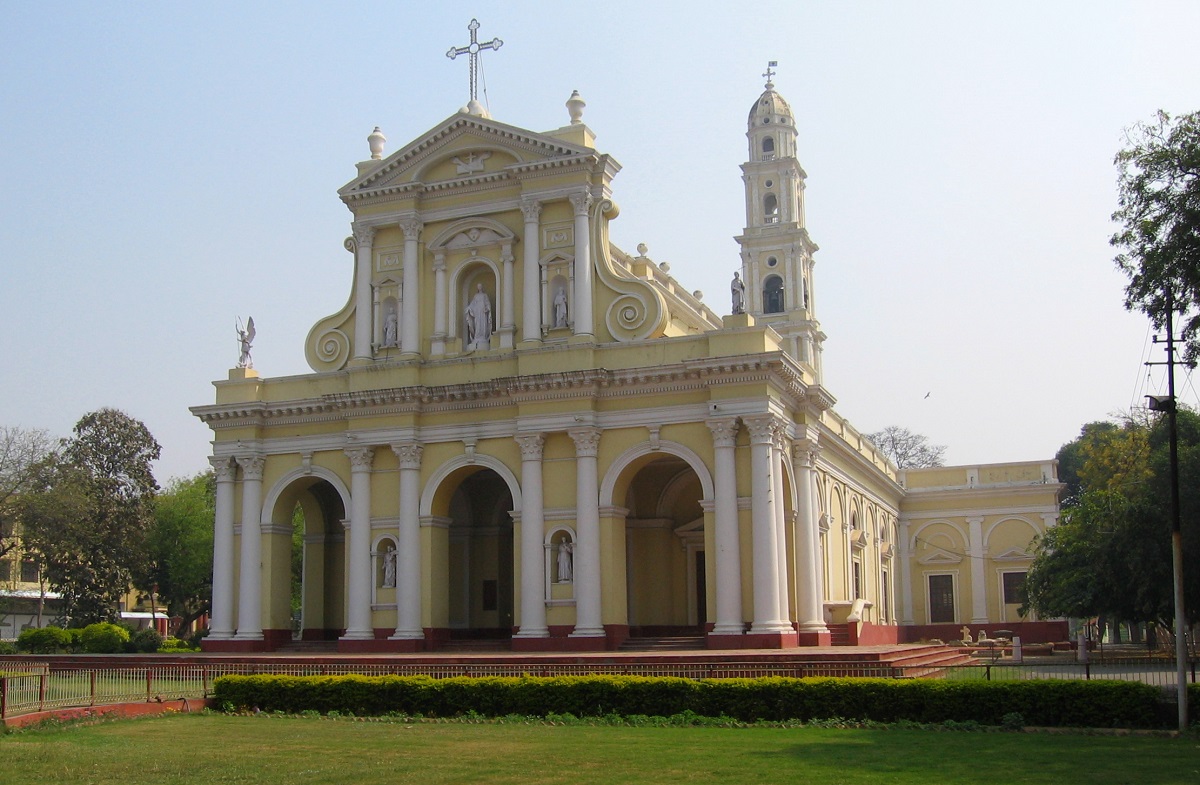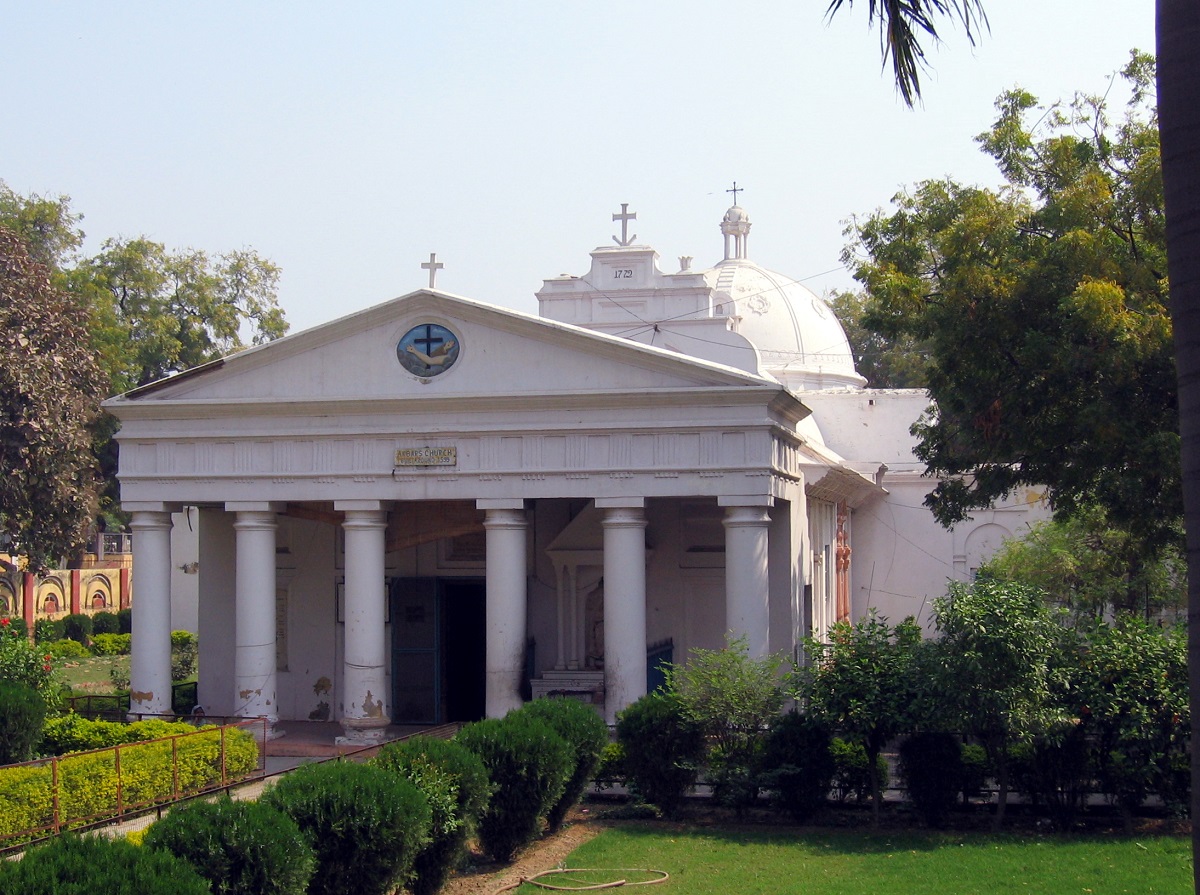The Indian city of Agra is one of the historic capitals in the country and seat of several of the country’s mogul emperors. In being so, Agra made its mark in the Indian history, and in present times tourists arrive in great numbers to enjoy the beautiful sight of world famous Taj Mahal.
Agra is a city which is almost a must for most travelers to India. Of course, this is due to Taj Mahal, which was built on the banks of the Yamuna River in Shah Jahan’s time. Shah Jahan was the mughal emperor who constructed the large marble mausoleum in love with his beloved Mumtaz Mahal who passed away during their marriage. Shah Jahan built the Taj Mahal in memory and devotion to his wife, and at the same time he may have hit the architectural zenith of the mughals.
Shah Jahan himself followed the construction of the Taj Mahal and he was eventually deposed and imprisoned by his son and India’s new emperor, Aurangzeb. Shah Jahan was imprisoned in Agra’s other major attraction; The Red Fort.
From the Red Fort, Shah Jahan was able to look at Taj Mahal from part of the imposing fort’s residential area, and it remains a favored look. In Agra, the two top attractions are complemented by a number of other important and interesting sights. From Agra you can also visit other places in the country such as Delhi and Jaipur, and conveniently with the Indian railways.








The founding and Ibrahim Lodi
Agra’s founding are not fully documented, but it is believed that it was Sikander Lodi who formally founded the city as a Sultan of Delhi in 1504. However, a local king had established the place as a settlement as early as 1475. With the Lodi dynasty Establishment of Agra started the development quickly, with Sikander’s son and heir, Ibrahim Lodi, ruling the Sultanate of the new city after his takeover of power in 1517.
However, the times as a center of power under the Lodi did not last long, with the Lodi dynasty falling. Central Asian Babur went with his armies to northern India, and on April 21, 1526, the first battle of Panipat was fought between Ibrahim Lodi and Babur’s troops.
The battle became bloody, and against Ibrahim Lodi’s up to a thousand war elements, Babur fought with the modern gunpowder and cannons of the time. Babur won the battle while Ibrahim Lodi was killed, and thus the end of his dynasty had come. With Babur, the mogul emperors came to India and to Agra.
The mogul era
With the moguls as rulers of northern India, Agra’s position as a political center was not complete. Babur had large plants built in Agra, so the first mogul emperor had already focused on the city. It was during this time that the formal garden north of the river Yamuna and the later Taj Mahal were constructed.
Under the name of Akbarabad, Emperor Akbar made the city his capital and it was a status that continued under Jahangir and Shah Jahan. Akbar allowed parts of Agra Fort to be erected, and he also established several institutions, making Akbarabad a center for arts and education, among others. It was also Akbar who established Fatehpur Sikri outside his city as a military camp.
With Jahangir as emperor, Akbarabad got many green plants in the form of gardens and parks within the walls of Agra Fort, and architecturally interested Shah Jahan commissioned the most famous building of India; The Taj Mahal which was completed in 1653.
The capital’s moved
Shah Jahan had erected the Taj Mahal in memory of his beloved wife Mumtaz Mahal, but already in 1639 he had built the city of Shahjahanabad, which is one of the many cities Delhi is founded as in history. Shah Jahan later moved the capital from Akbarabad to Shahjahanabad, which naturally caused focus and development to move to the new capital.
Despite the fact that Emperor Aurangzeb later moved the capital back to Akbarabad and later to Aurangabad, it was later Delhi that was the moguls’ preferred capital for the end of their reign. After the fall of the Mughals, people of the Maratha group became dominant in the city, which they called Agra.
British Raj
Agra became part of British India, British Raj, in 1803, and it came to various forms of government in the city over the following approximately 150 years under Britain. As before, the central power of Agra was established at the large-scale and heavily fortified Agra Fort.
In 1834, the Agra Presidency was established as an administrative region, like many others in the government of the great colony. However, this construction ceased again in 1836. At this time, almost five million lived in the region around Agra.
The 1830s in northwestern India also became known as the decade when a terrible famine struck; the so-called Agra Famine, where an estimated 800,000 died due in the years 1837-1838. Of course, this affected the city and the people of Agra and in many surrounding districts.
In the 1850s, Agra was a major city with busy market streets. In the main street, the shops were on the strip as a witness to a busy trading town. However, the time was also a period when it revolted against British rule in 1857. Local military units had rebelled in Agra, where the British had to retreat to the city fort. The British lost control of the city for a time, where looting and other unrest took place. However, the rebel troops migrated towards Delhi, enabling the British to easily restore peace and order and their rule of the city.
Later in the British era, Agra’s status as the seat of the regional government, the Supreme Court, etc. was moved, thus beginning a period of downturn for the city. Some of Agra’s sights were emptied of various effects, making it a town of a kind of decay, which entered the 20th century under continued British rule.
The 20th Century to the Present
Throughout the 20th century, Agra was not a political seat, and tourism was not yet developed as it is today. Instead, the city grew significantly as an industrial center with, among other things, some chemical industry.
Today, Agra is one of India’s largest tourist destinations that will experience unique Taj Mahal, and it has given the city new development of luxury hotels and other types of tourist products. The Taj Mahal not only stands as an attraction, where Agra Fort and some of the city’s old mausoleums and British buildings also contribute to good experiences and activities.
Physically, Agra and Delhi have been connected by a highway and investments have also been made in railways, airport facilities and other things that make Agra easily accessible.
Overview of Agra
The Indian city of Agra is one of the historic capitals in the country and seat of several of the country’s mogul emperors. In being so, Agra made its mark in the Indian history, and in present times tourists arrive in great numbers to enjoy the beautiful sight of world famous Taj Mahal.
Agra is a city which is almost a must for most travelers to India. Of course, this is due to Taj Mahal, which was built on the banks of the Yamuna River in Shah Jahan’s time. Shah Jahan was the mughal emperor who constructed the large marble mausoleum in love with his beloved Mumtaz Mahal who passed away during their marriage. Shah Jahan built the Taj Mahal in memory and devotion to his wife, and at the same time he may have hit the architectural zenith of the mughals.
About the upcoming Agra travel guide
About the travel guide
The Agra travel guide gives you an overview of the sights and activities of the Indian city. Read about top sights and other sights, and get a tour guide with tour suggestions and detailed descriptions of all the city’s most important churches, monuments, mansions, museums, etc.
Agra is waiting for you, and at vamados.com you can also find cheap flights and great deals on hotels for your trip. You just select your travel dates and then you get flight and accommodation suggestions in and around the city.
Read more about Agra and India
Buy the travel guide
Click the “Add to Cart” button to purchase the travel guide. After that you will come to the payment, where you enter the purchase and payment information. Upon payment of the travel guide, you will immediately receive a receipt with a link to download your purchase. You can download the travel guide immediately or use the download link in the email later.
Use the travel guide
When you buy the travel guide to Agra you get the book online so you can have it on your phone, tablet or computer – and of course you can choose to print it. Use the maps and tour suggestions and you will have a good and content-rich journey.
Taj Mahal • Shah Jahan • Red Fort • Churches • Atmosphere
Overview of Agra
The Indian city of Agra is one of the historic capitals in the country and seat of several of the country’s mogul emperors. In being so, Agra made its mark in the Indian history, and in present times tourists arrive in great numbers to enjoy the beautiful sight of world famous Taj Mahal.
Agra is a city which is almost a must for most travelers to India. Of course, this is due to Taj Mahal, which was built on the banks of the Yamuna River in Shah Jahan’s time. Shah Jahan was the mughal emperor who constructed the large marble mausoleum in love with his beloved Mumtaz Mahal who passed away during their marriage. Shah Jahan built the Taj Mahal in memory and devotion to his wife, and at the same time he may have hit the architectural zenith of the mughals.
About the upcoming Agra travel guide
About the travel guide
The Agra travel guide gives you an overview of the sights and activities of the Indian city. Read about top sights and other sights, and get a tour guide with tour suggestions and detailed descriptions of all the city’s most important churches, monuments, mansions, museums, etc.
Agra is waiting for you, and at vamados.com you can also find cheap flights and great deals on hotels for your trip. You just select your travel dates and then you get flight and accommodation suggestions in and around the city.
Read more about Agra and India
Buy the travel guide
Click the “Add to Cart” button to purchase the travel guide. After that you will come to the payment, where you enter the purchase and payment information. Upon payment of the travel guide, you will immediately receive a receipt with a link to download your purchase. You can download the travel guide immediately or use the download link in the email later.
Use the travel guide
When you buy the travel guide to Agra you get the book online so you can have it on your phone, tablet or computer – and of course you can choose to print it. Use the maps and tour suggestions and you will have a good and content-rich journey.




Similar to Agra Travel Guide